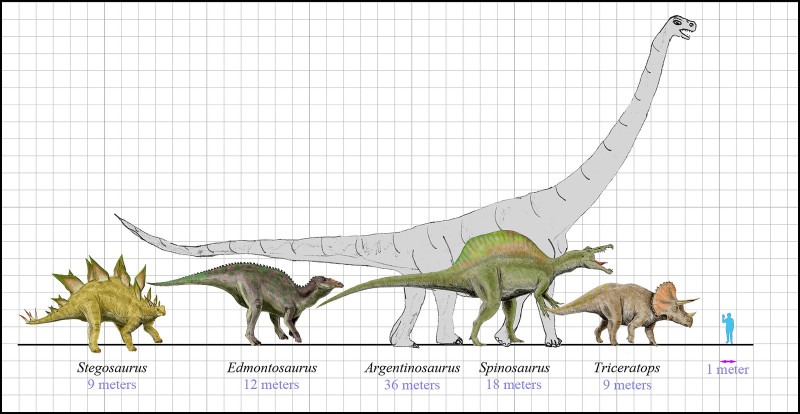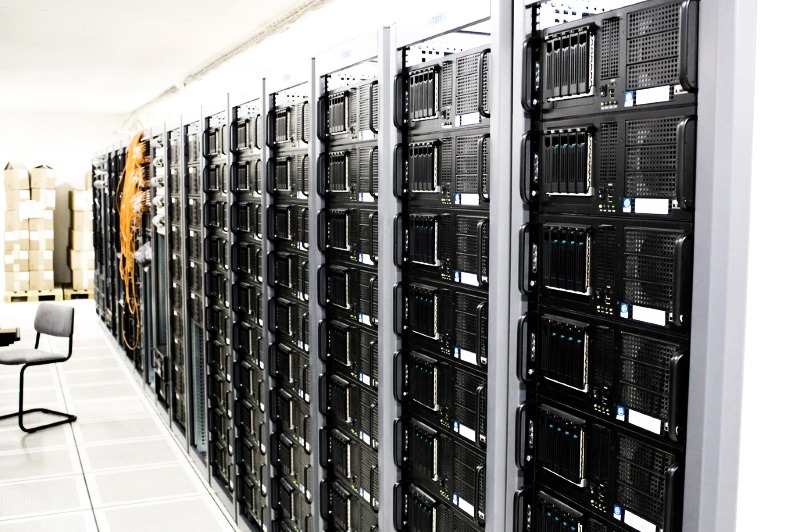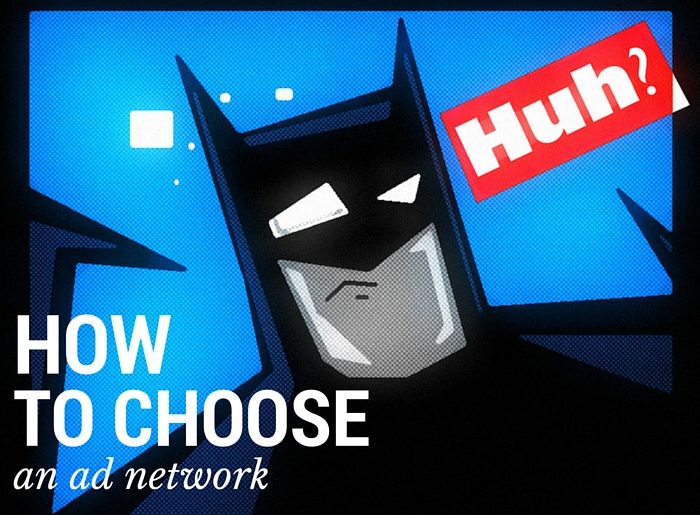There are a few things you should consider before signing a contract with that ad network, here are some of those things.
So you’re finally all set to monetize the website you’ve been working on. Or perhaps you’re already signed up with an ad network but are dissatisfied with its performance and want to switch. Or maybe you want to employ the services of more than one network to get better results.
There’s just one problem—there are just too many choices. And the jargon flying around in the ad tech industry certainly doesn’t help things. What is programmatic buying? Should you opt for CPC or CPM? Should you go with standard IAB units or the newer, more innovative types?
Some of these questions may seem daunting if you haven’t particularly taken the time to dive in and understand how the online ad tech ecosystem works, so it may seem like choosing a network for your website is going to be a tough task, but it doesn’t need to be so.
In the end, it boils down to a few things you should consider before signing a contract with that ad network, here are some of those things:
1. Size of advertiser network

All things being equal, an ad network with 10,000 advertisers on board will give you better performance than one with 1,000 advertisers—assuming of course that the number of active campaigns running on the network at any time is also proportionate to the number of advertisers.
Why is this so? First, a bigger inventory means that the ad network has more options when trying to match an ad to a website based on its content; this is called contextual targeting. Better targeting equal to increased user engagement and higher CTR rates.
In addition to better contextual targeting, a larger pool of advertisers also means that a larger number of geographic areas are represented—decreasing the chances that your inventory will go unsold.
Finally, in case of an ad network that sells inventory to the highest bidder, more advertisers mean more bidders, which obviously translates to higher revenue for you. But in the end, it’s not just the size that matter, which brings us to our second point.
2. Quality of ads in the network

As far as an average internet user is concerned, the ads that they see on your website are either implicitly or explicitly endorsed by you—even though this may be far from the truth.
Most publishers don’t concern themselves with what ads are being served as long as they are being served (and are making them some money). This could be problematic and harmful to your brand, even if it gives you good gains in the short term.
Let’s say you run a fitness blog and leave no stone unturned to create the most compelling content within your niche. Your audience loves it. Things are great. Now what if an ad shows up and tries to sell magic weight loss pills? That’s a complete trust killer. And that’s not even the least of your problems.
Low quality ads are just bad advertising in general, even if you ignore the intangible damage that you may suffer from associating with them—fact remains that even within ads, there’s a hierarchy, and users are less likely to click on low quality ads, leading to lower CTR and revenue.
3. Variety available in ad formats

Formats can have a big impact on ad performance and in this particular scenario; one size definitely does not fit all—what works for one website may turn out to be a complete dud on another.
Ad networks offer multiple ad formats such a standard IAB display units, rising start IAB display units, custom display units, text ads, rich media ads, video rolls, interstitials, pop-ups, pop-unders, in-text ads, search box, tag cloud, and other proprietary formats that are exclusive to them.
If you’re not too sure which one of these formats you should go with, it makes sense to go with a network that offers multiple ways of displaying ads, so that you can test them over a period of time and know firsthand which ones work best for you.
One thing to ensure here is too not have too much going on at the same time. Using a video roll along with banner and in-text ads for instance is probably a bit too much and will harm your website’s user experience more than it will do any kind of good.
4. Compensation & payment terms

There are multiple compensation methods that ad networks use to pay publishers. The most common ones are CPC (cost per click), CPM (cost per mile), CPV (cost per view), CPA (cost per action), and fixed cost. Let’s look at what they mean:
In a cost per click (CPC) model, publishers are paid a certain amount of money each time an ad unit is clicked.
In a cost per mile (CPM) model, publishers are fixed amount of money (which varies widely based on a number of factors) for every 1,000 ad impressions.
In cost per view (CPV) model, the publisher gets paid a certain amount of money each time an advertiser’s video is viewed.
In a cost per action (CPA) model, the publisher gets paid a certain amount of money each time a user completes a specified action such as installing a software or completing a registration form.
In a fixed cost model, the publisher sells their ad inventory for a fixed amount of money for a specified time, regardless of how well the ads perform.
Which pricing model works best for your website can ultimately only be ascertained by testing them out one by one and comparing the revenue that’s generated. The benefit of signing up with an ad network that offers more than one compensation model is that you won’t have to switch each time you want to try out a new one—you can just start a new campaign from within your existing interface.
Payments are usually made on Net 10, net 15, net 30 and net 60 terms which essentially specify that the net amount is expected to be paid in full and received by the publisher within 10, 15, 30 or 60 days after the service is completed. A longer term doesn’t mean there’s anything wrong with the ad network, just that they’re waiting to be paid by the advertiser before passing the money on to you.
As with most matter of money, it pays to do your due diligence before signing on with a network. Try and contact a few publishers who are already on the network and get a sense of how their experience with them has been. Is the network able to fully sell their inventory? Are there big fluctuations in revenue? What’s the average revenue numbers you can expect? Do they pay on time?
5. The underlying technology

When I say technology, I don’t mean just the jargon that gets thrown around in the ad tech world (although, let’s admit, there is a lot of); what I mean is the basic infrastructure that your ad network has that powers its business.
Apart from a robust hardware infrastructure, a good ad network should provide a great UI/UX experience to its users. Think of Google AdSense, one of the reasons that it’s so popular is that it’s a breeze to set up and run, yet at the same time so feature-rich.
Publishers especially, should look for features that hold a special importance for them, such as the ad management system and the reporting tools. Are they easy to use? Is the reporting accurate and provides updates in real-time? How well is the payment system integrated into the publisher interface?
Newer technologies such as programmatic buying and real time bidding are disrupting the online ad buying and selling ecosystem and helping publishers earn more money from the existing inventory. If you’re a publisher who’s been working with a legacy ad network that’s yet to catch, you may see great gains if you switch over to a new network—it’s definitely something worth trying out.
FAQs
Ad networks mediate the sale of ad inventory between publishers and advertisers. Specifically, it refers to digital media and online advertising.
An advertising network helps publishers monetize, control fill rates, optimize yield, and transact media buys. Ad servers manage advertising campaigns and report on results, among other essential functions.
Ad networks earn money by taking a cut of ad revenue or by marking up inventory before selling it. In the campaign panel of the ad network, the advertiser can track and manage the ad’s performance.

Shubham is a digital marketer with rich experience working in the advertisement technology industry. He has vast experience in the programmatic industry, driving business strategy and scaling functions including but not limited to growth and marketing, Operations, process optimization, and Sales.



![Top 12 Ad Networks in India Every Publisher Should Know [2024 Edition] Indian Ad Networks](https://www.adpushup.com/blog/wp-content/uploads/2019/09/undraw_Note_list_re_r4u9-270x180.png)



